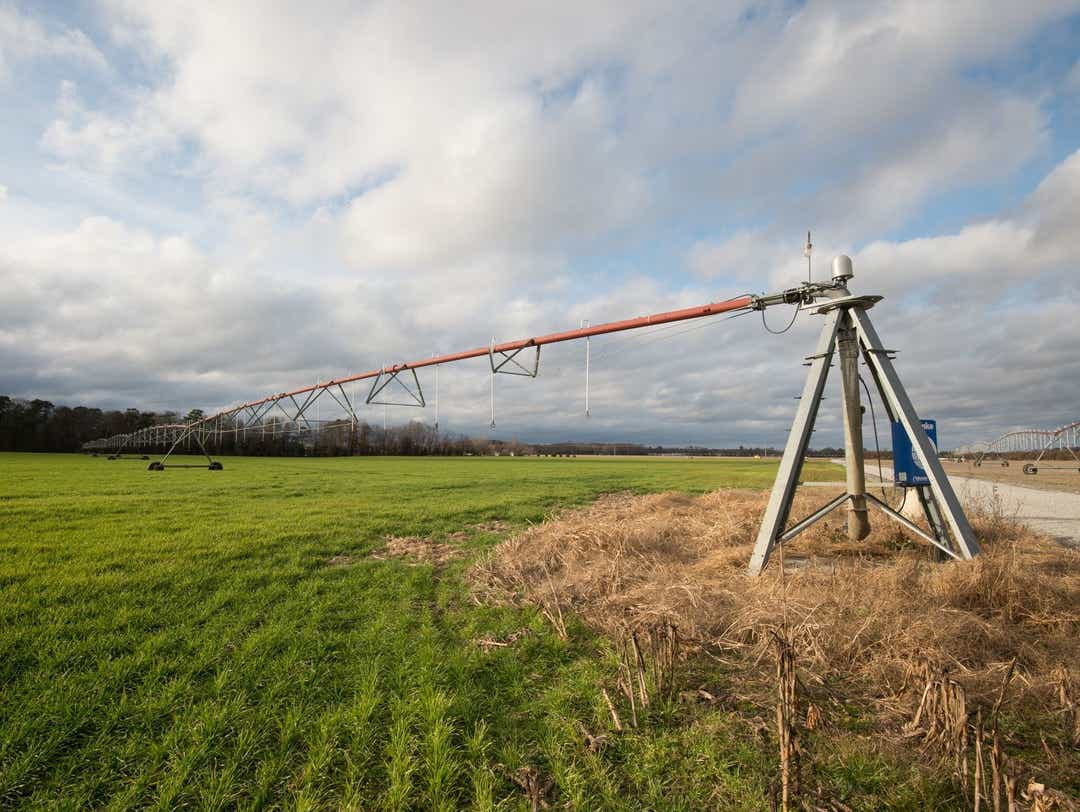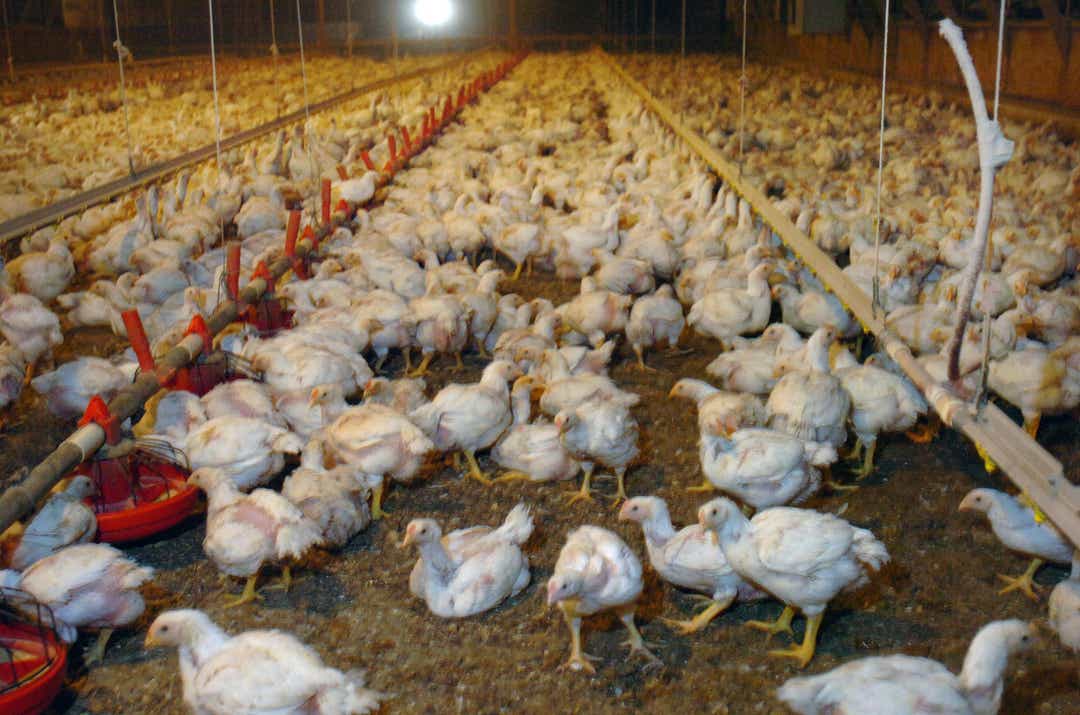In a state where there are more chickens than people on any given day, officials tout the economic force of Delaware's poultry industry, while the companies stand behind the idea of family farming in local communities.
But health and environmental justice experts wonder if there’s another link between chickens and Delawareans: specifically, whether the pollution produced by industrial poultry operations could be related to higher rates of disabilities within the state’s school systems and in low-income and racially diverse communities.
“Everybody should have the opportunity to reach their highest potential,” said researcher Joseph Galarraga, who recently earned a master’s degree in public health from the University of Maryland. “This really should be a priority within Delaware, to basically uncover more and dig deeper to the root of this issue.”
While more research is needed to draw direct links between those factors, an initial study undertaken by Dr. Sacoby Wilson and a team of students and graduates from the University of Maryland-College Park School of Public Health indicates there may be connections between agricultural use of lands, tainted groundwater used for drinking water and rates of disabilities in communities with higher percentages of poverty and diversity.

“Further investigation should be conducted regarding the state’s agricultural production and its connection to childhood disabilities and poor performance in schools,” the report concludes. The report has not been peer-reviewed or published in any major scientific journals.
Still, the researchers raise serious questions about the impacts of a problem that’s been plaguing rural parts of the state for decades, one that experts have largely blamed on agricultural practices: nitrate pollution in groundwater.
Finding nitrates in groundwater is prevalent in rural America, and Delaware is no different. Nitrate, a natural form of nitrogen, can become a pollutant when it reaches groundwater or waterways, primarily through the over-application of fertilizers – yes, that includes fertilizers that produce those picture-perfect lawns – and the mismanagement of waste.

Environmental regulations on the state and federal levels require companies and farmers to properly manage waste, nutrients and other pollutants, but that wasn't always the case. Before landmark laws like the Clean Water Act and modern science-based practices, there were no requirements for tracking nutrient pollution from farms.
High nitrates in drinking water have been linked to a slew of health problems, but most notably the potentially fatal blue baby syndrome. That condition, in which infants and young children’s blood cells are essentially unable to adequately carry oxygen, is why there is a safe drinking water standard of 10 milligrams per liter in public drinking water.
Not everyone in Delaware is linked to a regulated public drinking water system, though.
About 20% of the state’s population relies on private wells, which are not regulated by state or federal agencies. Checking private wells for contaminants, like nitrate or bacteria, is the sole responsibility of the well owner.
DELAWARE'S DRINKING WATER: Where does it come from and is it safe?
Looking at the U.S. Environmental Protection Agency’s finding that Delaware has the largest percentage of land with above-normal nitrate concentrations in the country, as well as Delaware’s ranking within the Top 10 states for the highest rates of disabilities among students, community advocates and local researchers have started wondering if there could be a link between those outliers and a growing demand for more chicken nuggets.
Wilson and his team unveiled their initial findings in a Zoom meeting in August, questioning whether the squat-looking poultry houses that dot rural Delaware’s landscapes could be contributing to physical and mental disabilities among Delaware’s youngest residents.
“We’re number one in a lot of things in our state,” said Maria Payan, a consultant with the Socially Responsible Agricultural Project, frequent poultry critic and founder of the grassroots Sussex Health and Environmental Network. "Unfortunately, it’s always something that’s bad."

The report’s initial findings suggest that the poultry houses that host tens of thousands of chickens at a time – and all the waste those birds produce – are most often located in areas with higher poverty rates and are home to higher percentages of people of color. They also found that schools reporting higher rates of disabilities among students also are closer to those farming operations than schools with lower percentages.
Researchers said they are concerned about a disproportional impact on low-income communities and communities of color, usually unincorporated areas that do not have town or city governments, or access to the resources that would help test or clean contaminated drinking water sources.
A TALE OF TWO TOWNS: Response to toxic water vastly different in two Sussex communities
“It’s like contamination without representation,” Wilson said.
Nitrate and bacteria pollution in groundwater that is used as the primary source of drinking water was at the heart of lawsuits levied against Mountaire Farms’ Millsboro-area processing plant where people lived in unincorporated areas of Sussex County found their drinking water wells had been tainted to unsafe levels.
In that case, the company blamed past agricultural operations as the source of the contamination, but ultimately, data reported to state agencies showed the existing nitrate contamination around that facility had gotten worse during their operations.
After unsafe nitrate levels were found in neighboring wells, Mountaire was asked to supply bottled water to impacted residents. A proposed state-issued consent order, including $50 million in upgrades at that plant, is on hold as a potential class-action lawsuit works its way through the court system.
FOR SUBSCRIBERS: Settlement ends neighbors' battle with poultry farm as they look to future with clean water
Working with local organizations, like the relatively new Sussex Health and Environmental Network, Wilson and his team say a lack of data – or difficulty accessing existing data – added constraints to the largely student-run study.
The study faced several limitations, though, including a lack of access to data from schools and state regulators, incomplete datasets and the reliance on nitrate concentration modeling rather than real-time sampling.

“I’m not surprised that the data’s not available. This is something that we are consistently running into in Delaware and it’s a real problem,” Payan said. “There needs to be transparency, especially at a time now that we’re talking about issues we’ve talked about for decades. Now it’s time to do something about this.
“If we don’t have the data, then we’re not going to be able to address the issues.”
RELATED: Delaware officials propose $50 million investment for clean water needs
The Delmarva Poultry Industry, which represents the farmers and companies that grow, slaughter and sell poultry in the region, did not respond to the study’s findings when asked by Delaware Online/The News Journal.
Researchers plan to expand their work related to agriculture-based pollution, disabilities and environmental justice in the Delmarva region, Wilson said. He suggested studies will rely on community cooperation, instituting air sensors and other monitors, as well as genetic source tracing of contamination found in peoples’ homes.
Wilson also spearheaded a 2017 study with the Union of Concerned Scientists, looking at disproportionate impacts of air pollution on communities of color near industry in New Castle County. This recent work also found that while pollution and health-related impacts may not be related to agriculture in northern Delaware, further study is needed.
REPORT: 7 New Castle communities at greater risk for cancer, respiratory illness
Wilson’s recent report also calls on state officials to collect better data and make it available to researchers to further study potential links.
“We need better data. We need more accessible data. We need transparent practices,” Wilson said. “We need to push DNREC and other state agencies for data transparency and hold them accountable.”
Contact reporter Maddy Lauria at (302) 345-0608, mlauria@delawareonline.com or on Twitter @MaddyinMilford.
"between" - Google News
August 25, 2020 at 04:12PM
https://ift.tt/2QtZzyt
Researchers want to know: Is there a link between chickens and disabilities in Delaware? - The News Journal
"between" - Google News
https://ift.tt/2WkNqP8
https://ift.tt/2WkjZfX
Bagikan Berita Ini















0 Response to "Researchers want to know: Is there a link between chickens and disabilities in Delaware? - The News Journal"
Post a Comment